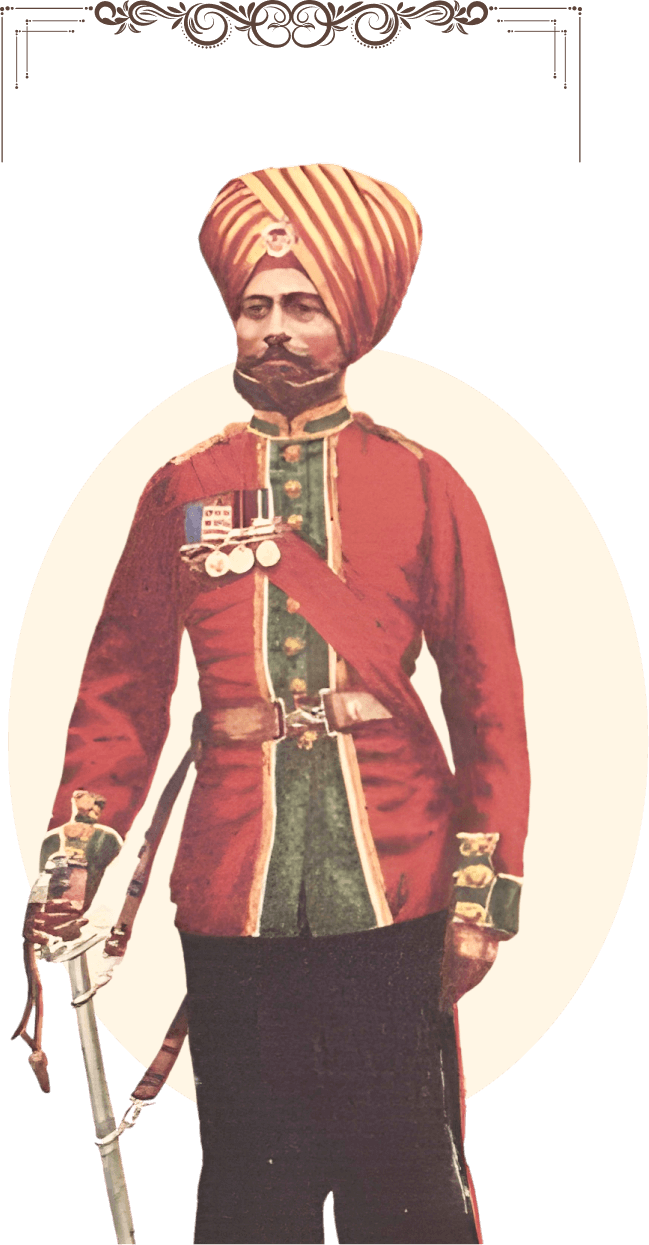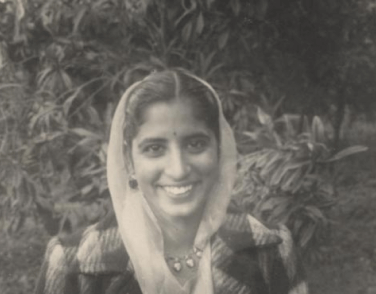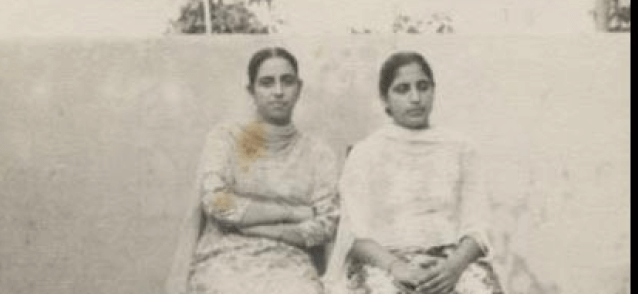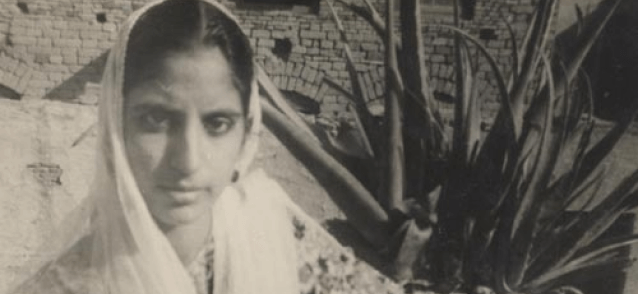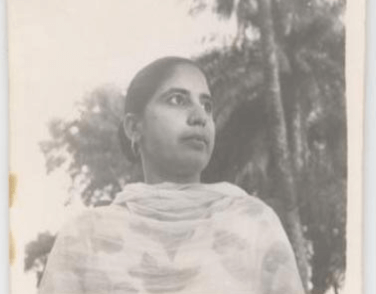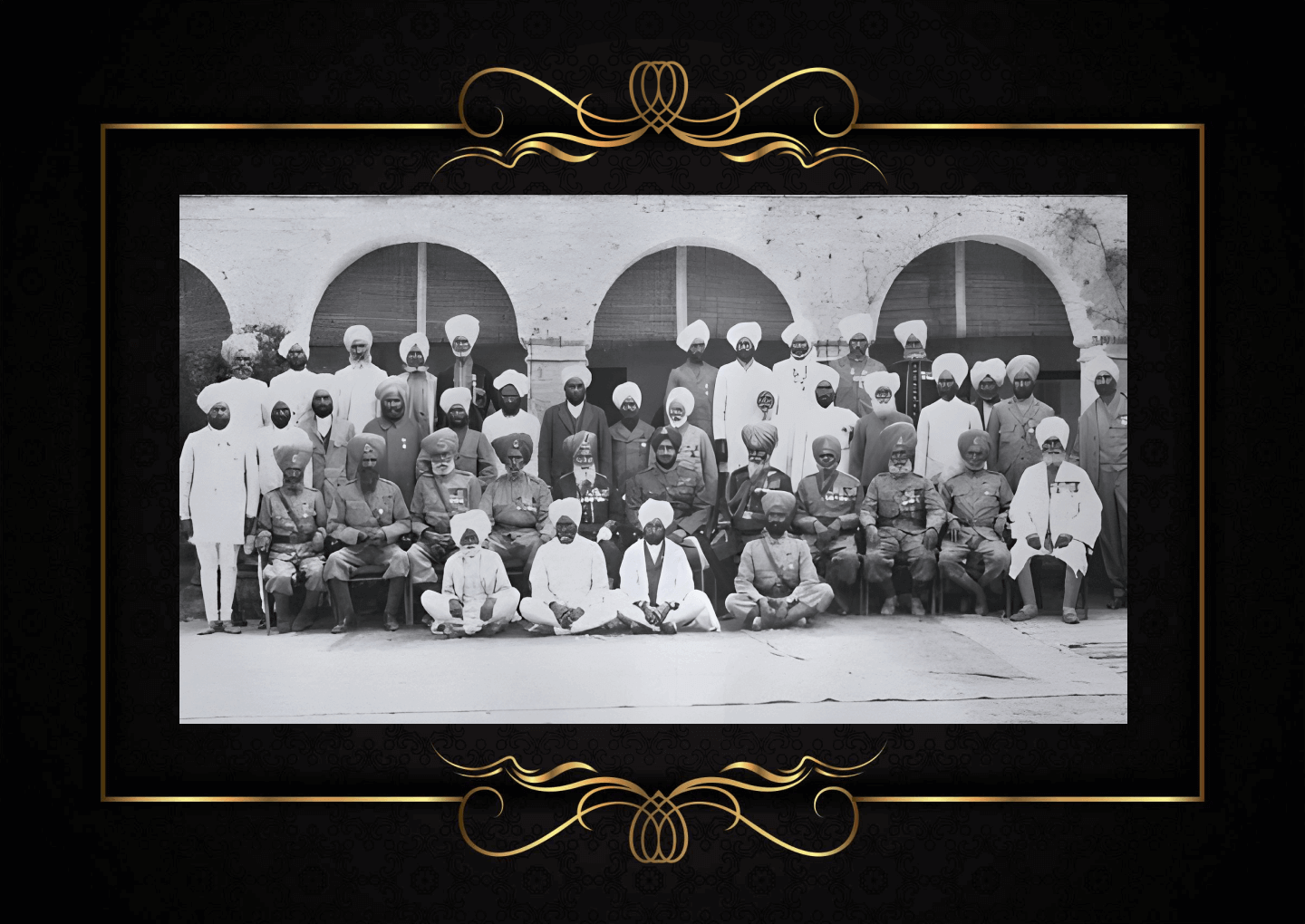References:
SANSKRIT TERM 'KAMBOJ' AND ITS VARIOUS PRAKRITIZED DERIVATIVES
The word Kamboh and its synonymous words like Kambocha (as in Ashoka's Dhauli
Rock inscriptions), Kamboya (as in Ashoka's Shahbajgari rock inscriptions), Kabo, Kambo, Kammo, Kamo
(Panjabi), Kambhu, Kambhi, Kambe, Kambey or Cambey and Kamboi (Gujrat), Kaam, Kam, Kamma, Kaum,
Camoje/Kamoj, Camojee, Camoze/Kamoz, Kamtoz (in Pushtu, the name of Shiaposh tribes, in Kafirstan
(Nuristan), south-east of Hindukush), Kambodha, Kamuda, Kumuda (Vayu Purana), Komde, Komdei, Tamboza
(Ptolemy), Kieufieu, (Tathatataguhya-Sutra) Kambu/Kaofu, Kipin, Chipin (Chinese), Kampoce, Kampoch,
Kapoce, Kapoch, Kampotes, Kampochih (Tibetan religious texts), Kambojka, Kamboika, Kamui, Kamoi, Kamuia
(Khroshti) etc etc are the Prakritic/other malformations, variants or derivatives of the original Sanskrit
standard term KAMBOJ which stands for Kamboja people as well as Kamboja country (Hindu Polity-A
Constitutional History of India ( Part I & II) by Dr K. P. Jayaswal, Kamboja People and the Country by Dr.
Jia Lal Kamboj D. Lit, These Kamboj People by K. S. Dardi). The entire ancient and medieval Indian
literature is replete with profuse references to Kamboja or Kamboj, which represent Kamboj people, Kamboj
Prince, and Kamboj country. (e.g. "The Reference Kamboja-uluk of Panin's Ashatadhyai (4,1,175) indicates
that the reference Kamboj variously stands for Kamboja King, Kamboja Prince, Kamboja people and Kamboja
country", ref: Panini's India, 1954, page 6 by Dr V. D. Aggerwal,. Ancient India by Dr. D. R. Bhandarker).
The word Kamboj in reference to Kamboja Vamsa, Kamboja King and Kamboja country occurs again and again in
India's Buddhist and Sanskrit religious literatures (Ref: Sir George Griesen) like Vedas, Puranas,
Shastras, Mahabharta, Ramayana, Manusimirtis, Jatkas, Mudrarakshasa, Rajatrangini etc and other famous
classics of ancient and medieval India like those of Panini, Yasaka, Kautalya, Bhaas, Kali Das etc etc.,
to mention only a few (Ref: Kamboja People and the Country by Dr J. L. Kamboj, These Kamboj People by K.
S. Dardi). The fact that the Kautalya's Arathasastra calles the Kamboja people as Kambhoja (Ref:
Kautalya'a Arathasatra 1956 translated by Dr R Shamasastry, page 407, book XI, Chapter I) obviously refers
to the Persian influence (Dr N. K. Sastri, Dr D. D. Kosambi etc) on the customs and language and name of
the Kamboja people of 3/4th century B.C who were living in the Pamir/Badakshan as well as Parapamisadaen
area south of Hindukush mountain systems. In some shlokas of Mahabharata,
the term Kambujana has also been used in reference to the Kamboja people of Epic India. Again the word
Kampoj/Kamboj/Kambu/Kambuj in reference to Kamboja country, Kamboja King, & Kamboja Vamsa etc also occurs
in countless ancient and medieval rock inscriptions in India, Pakistan, Afghanistan, Sri Lanka, and
Cambodia (Kamboj Desh) per Dr J. L. Kamboj of Delhi University. In Pali literature, also a variation of
Kamboja occurs as KAMBOJESU. In Persian, this word occurs as Kambujia or Kambojia in the old Persian rock
inscriptions refering to Achaemenian (Kainad) kings and their vamsa i.e. "………..Later, Kamboja people
crossed Sindh north-westwards and expanded into Iran where their name stands preserved as Kambujia in old
persian rock inscriptions relating to Achaemenian Kings." (Ref: Ancient Vedic India by Dr R. C. Majumdar,
Dr A. D. Pusalkar, Vedic Index of Names & Subjects by Dr. A. A. Macdonell and Dr. A. B. Keath, Hindu World
Vol I, by Benjamin Walker, Pre-Aryen et Pre-Dravidien dan d'Indi, JA (Jan-March 1926) by Sylvain Levi .
Also ref to researches of Dr Hoffman, Dr Lassen, Dr Kuhn, Dr S. Sen, Dr Chattopadhya, Dr. Nariman, Dr D.
R. Bhandarkar, Dr. Acharya R. Raman Pandey, K. S Dardi and other Indologists). In the rock inscriptions in
Sanskrit, Pali and Khmer language in Cambodia, we find the word Kambu/Kambuj/Kampuchih/Kamboja,
/Kambodscha/Kambodja, Camboja etc refering to Kambodge, Cambodge, Kambuj or Kamboj Desh (Ref: Inscriptions
of Veal Kantel….Inscriptions Sanscrites de Champa et du Cambodge page 30 (e. g. Kambupuri, Kambuja etc in
King Yaso Varman's rock inscriptions Angkor Thom in Cambodia), The Cultural Heritage of India Vol II, by
Dr. C. P. Ramaswami Aiyer, Vice Chancelor, Banaras Hindu University, UP, India, : Les Estats Hindouises
d'Indochine et d'Indonesie 1964 by Prof G. Coedes …Translated as Indianized States of South-East 1964 )
which has been transliterated as Kambodge or Cambodge into French by the French writers from which the
modern name Kambodia or Cambodia in English has originated. The Pali chronicles (i.e. Chamadevivamsa,
Jinakalamali, Mulasasna) in Chiangmai use Kamboja, and 'Kambojaraja' for the Kamboja king of
Siridhammanagara ( Ligor) in south basin of Cambodia (Ref: : Les Estats Hindouises d'Indochine et
d'Indonesie 1964 by Prof G. Coedes …Translated as Indianized States of South-East 1964 page 136).Thai
chronicles left by Thai principalities (12th century AD) of upper Menam in Indo-China mentions the people
of Lova in the upper basin as 'Kambojas of Lova' (op cit page 161). Sylvain Levi identifies Tambuza or
Tamboza of Ptolemy's geography, with the Sanskrit Kamboj (Pre-Aryen et Pre-Dravidien dans l'Inde, JA
January-March, 1926 by Sylvain Levi) and the word Cape Camboj seems to have been used for Cambodia. (Ref:
Intercourse Between India & the Western World 1971 page 133 by H. G. Rawlinson M.A. I.E.S). In the Chinese
writings, the reference occurs as Kambu/Kafu/Kaofu for Kambojas of India and Chen-la for Khmer Kambojas of
Cambodia. The Tuthagataguhya-Sutra of Ratnakuta Collections of the Buddhist religion uses the word
Kieufieu for the Kamboja people and Kamboja country. The reference Kieufieu of Tuthagataguhya-Sutra stands
translated variously as Kampoce, Kampochih, Kapoch and Kapoce and Kampotse etc in the Tibetan religious
texts. According to Tibetan religious text Paag-Saam-Jone-Zang, the country between Bengal and Burma was
known as Kampotse. The Kamboja country mentioned in the Braham Purana of Sanskrit literature refers to
this very same Kampotse country located in the eastern parts of India, in the neighborhood of Assam,
sandwiched between Burma and Bengal. The author of Vayu Purana uses Kumuda-dvipa for Kusha-dvipa. This
Kusha-dvipa or Kumuda-dvipa is the Alexandrian Sugadha Strapi (Sogdiana) situated on north west frontiers
of India comprising northern parts of Tajikstan and Uzbekstan and which country appears named variously in
ancient writings as Kumuda, Komuda, Komdai, Komdei, Kamdei, Kamdesh or Kambojdesh etc. This Kumuda and
Ptolemy's Komdei (Kamdesh or Kambojdesh) are synominous words and they both stand for Komdesh, Kamdesh or
Kamboj desh i.e Kamboja country of Kamboja people of the Iranian affinities living on the borders of
ancient India and ancient Iran i.e. in the Badakshan/Pamirs and surrounding regions, says Dr. Buddha
Parkash (Ref: India and the World 1964 page 71 by Dr. Buddha Parkash, Kamboja People and the Country by
Dr. J. Lal Kamboj. Also ref to researches of Dr H. C. Seth, Dr. P. C. Baghchi and other historians).
Another modified version of Kamboj is described as Kamusa, Kamuda, Kamuia, Kamoia, Kambuja, Kambujaka and
Kambojaka etc in the Mathura lion Capital Inscriptions (Kharoshti language).
"The reference Kamusa, Kamuda, Kamuia, Kambojaka etc. represents the name of the Kambuja (Kamboja) tribe",
says famous Indian historian Dr. Nil Kanth Sastri (vide Comprehensive History of India Vol 2, page 270 by
Dr N. K. Sastri. Also ref to works of Dr Buddha Parkash, Dr R. K. Mukerjee, Dr J. Lal Kamboj etc). Several
Greek historians use Cambysis for Kamboj or Kambujia (O.P.) while referring to several Kamboja kings
(Cambysis I, Cambysis II or Kambojia I, Kambojia II.. etc) of Achaemenian dynasty. The word Kamboj
appearing in IRDA Copper Plate (i.e Kamboj-Vamsa-Tilak) and the Kamboja appearing in Dinaaj Pore Capitol
Inscriptions (i.e Gaudesewara Kamboja) are used for the Kamboja Vamsa of several Kamboja Kings of Gaur
Desa as well as a compellation used by one victorious Kamboja King i.e. Gaudeswara Kamboj ruling also over
Gaur desh in the 9th century AD. In the Mathura Lion Capitol Inscriptions, we find this word inscribed in
Khroshti as Kambojka/Kamuia (Queen Aiyasi Kambojka/Kamuia) and Kamui/Kamudha (Prince Khrosta Kamui/Kamudha
etc). We can also find the term Kamboja in its Perkritized form in the Kamaon hills of the Himalyan
foothill spurs, adjoining Pauri-Garhwal area, where the Kamboja once held their own and gave their own
name to these hills. Some writers and historians have used word Kanauj in the same context as the word
Kamboj (Idrisi) while others opine that the word Kanyakubja from which word Kanauj evolved is yet another
variation of the original Sanskritic word Kamboj (H. S. Thind etc). In Kathiawar, Gujrat, we find some
Indo Aryan Kasatrya caste now engaged mainly in Agriculture and are refered to as Kambhi, Kambhe etc (Ref:
Historical and Cultural Dictionery of India 1976, page 141 by George Thomas Kurian) and there is also
famous medieval sea port town called Kambey or Cambey, and there is said to be another geographical place
called Kamboi (Ref: Hist and Culture of Indian People, Delhi Sultanate page 155, By Dr R. C. Majumdar, Dr
A. D. Pusalkar)) or Kambhu, a famed historical place name, a site of war during 1392 between Zafar Khan
and Farhat Mulk of Gujrat (vide ref: Chronology of Indian History, Vol II, 1972 by C. Mabel Duff). These
words are undoubtedly the Prakritic variants of the original Sanskritic word 'Kamboja' and are reminiscent
of the Western Rajayapalas (Kashatrapas) who, after the death of Kamboja emperor Mause or Moga of Taxilla
(20BC -22AD), had become independent and later ruled over Malwa/Kathiawar from the start of Christian era
until the end of 3rd century AD. These Western Rajayapalas have been identified as Kamboja people by
historians (Ref: Ancient India Vol III, page 94, 125 by Dr. T. L. Shah). Nagpaul, Soni, Asoi, Kaura, Juj
etc still intact in Gujrat. Sri Guru Gobind Singh ji, while refering to the invasion of Alexandra of
Macedonia, uses the reference Kamboj for the frontier people or Uttarpatha people, living on north-west
frontiers of India ('Kamboj, Kilmak kathin pal me kat dare': vide Triya Chritra 217 page 1125 of Sri Dasam
Granth Sahib 2024 published by Bhai Jawahar Singh, Bhai Kirpal Singh Amritsar). The word Kamboj referring
to Kamboja People appears also in Ashoka's Girnar, Kalsi and Mansehra rock inscriptions, though we also
find Kambocha in Ashoka's Dhauli Rock inscriptions and Kamboya in Shahbajgarhi rock inscriptions, in
reference to the same people. "The name Kambo (Kamboj) of numerous Hindu caste found in Panjab is derived
from this Kamboya of Ashoka's Shahbajgarhi rock inscription" says celebrated Dr. K. P. Jayaswal. (Ref:
Hindu Polity-A constitutional History of India (Part 1 & 2) by Dr K. P. Jayaswal). "The Kambo or Kamboh
caste found in upper India are the descendents of the Ancient Kamboja people of Pamir and Badakshan" (Ref:
Cultural Heritage of India Vol II, by Dr. C. P. Ramaswami Aiyer, Vice Chancellor Hindu Banaras
University). "Ancient Kamboja tribe was a famous Aryan tribe whose descendents we find in the Kambos of
today's Punjab" says Dr. Buddha Parkas in his Social and poltical movements in Ancient Punjab 1964 page
242-243. "The Kambohs, a farming community of Panjab are the modern descendents of the ancient Kambojas of
Pamir/Badakshan" says Dr Acharya R. R. Pandey (Ref: Sidhant Kaumdi 1966 p20-22 by Dr Acharya Radha Raman
Pandey. In this context please also ref to works of Dr H. C. Rai Chaudhary, Dr J. C. Vidyalankar, K. S.
Dardi, Dr J. Lal Kamboj etc etc). According to Bhai Kahn Singh from Nabha, "Scholars are of the opinion
that the Kambo community of Panjab is related to ancient Kamboja country which was located in the
Hindukush mountain system and its adjoining geographical areas, and which land was noted in ancient
literature for its finest breed of horses" (refer to entries Kambo and Kamboj: Gurbani Ratnakar, Panjabi
Shabad Kosh page 257 by Bhai Kahan Singh Nabha). Some writers have used the word Kamboz for Kamboja people
(vide Jat Tribes of Zira 1992, by Mr H. S. Shergil M.A. L.L.B.), which is historically and grammatically
incorrect. There has never been any word like Kamboz in ancient Sanskritic/Prakrit/Persian or Khmer
literature or in any ancient rock or epigraphic inscriptions. One tribal section of Shiaposh Kafir
Kambojas of the Hindukush does call itself as Kamoz, but that is only a dialectical variation confined to
a restricted and isolated region only. The standard and literary word which has been in use from times
immemorial is unmistakeably and undoubtedly the 'Kamboj' and not the Kamboz.
